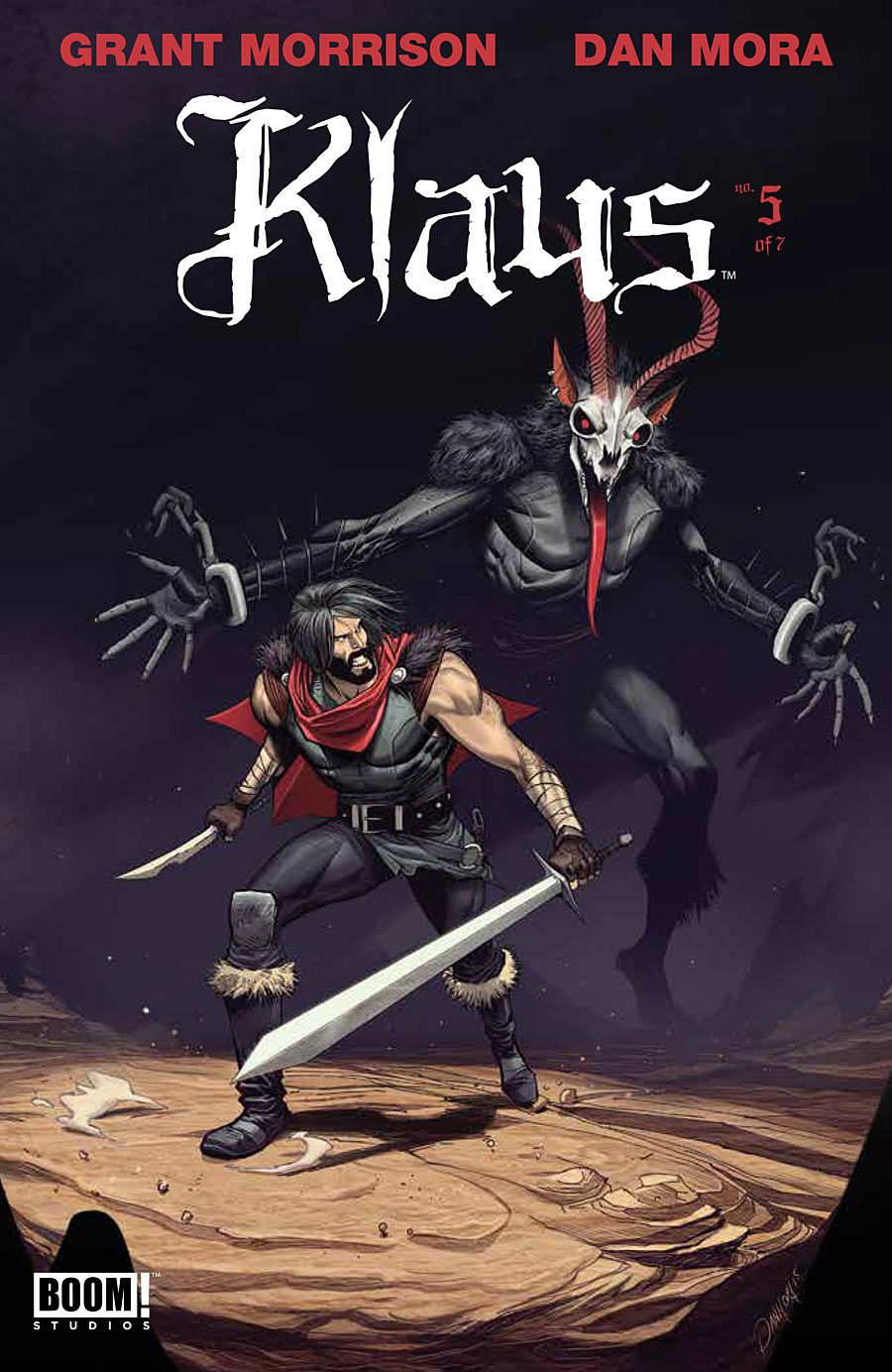Writer Grant Morrison and artist Dan Mora set up the conclusion of their rousing reimagining of Santa's origin in "Klaus" #5, which emphasizes character development details that make the bad guys worse and the good guys better.
Marching briskly toward the conclusion of the series, issue #5 is a scripting gem that highlights the multiple facets of the story that will wrap up in the final two issues. Magnus is finally a worthy villain to Klaus' hero. During the series, Magnus has transitioned from a simple paranoid tyrant who allows the military to solve his problems to a mad servant of the evil voice in the black rock we see this issue, and that voice has granted him power that won't be used for anything good.
Dagmar and Jonas are at a turning point in this issue. It's a time of discovery for them as Morrison unveils the truth of their status in the community and the truth about Magnus. Morrison is fond of placing family members in juxtaposition, and the crumbling family dynamic in issue #5 foreshadows the hard choices facing mother and son.
Morrison also establishes the citizens of Grimsvig as a set of characters in growing opposition to the government. Klaus' individual benevolence toward the children has created a pattern of civil unrest in some of the citizens that manifests itself in this issue as Dagmar learns the truth of Magnus' tyranny. As the citizens choose sides, Morrison turns them into a force to be reckoned with before the story concludes.
Dan Mora's meticulous and emotional art is the centerpiece of the incredible world-building task established by Morrison's script. Mora's expressive animated style is big on small details, fine lines and perpetual motion. His pacing and panels are reminiscent of the storyboard for an animated feature, and his characters all run the gamut of facial expressions that leave no doubt as to their emotional state. Watching Magnus transition from arrogant to angry to fearful and then straight to madness during his conversation with Dagmar is a treat.
Mora's colors enhance his delicate lines. Dark shades follow Magnus in backgrounds and on his person, while Klaus and his scenes favor reds. The city itself lives and breathes as the characters pass through it, courtesy of the light reflected by the falling snow and glowing from the occasional street lamp.
Conflict and resolution are brewing up an emotional storm in Grimsvig as Morrison and Mora deliver another action-packed issue with excellent character-driven moments in "Klaus" #5. It's been a pleasure to talk about this book with folks at the local comics shop, because the series invites a wide variety of tastes. The guy who loves horror comics and recommended "Southern Bastards" to me digs "Klaus." The guy who is a die-hard "Green Lantern" fan digs "Klaus," and so does the guy who never reads comics about caped heroes. "Klaus" #5 is a good story told well, so it's no wonder the title is appealing to readers across the board.

